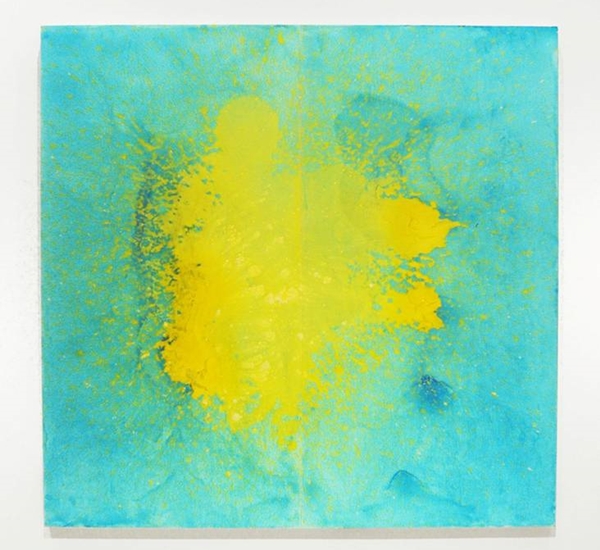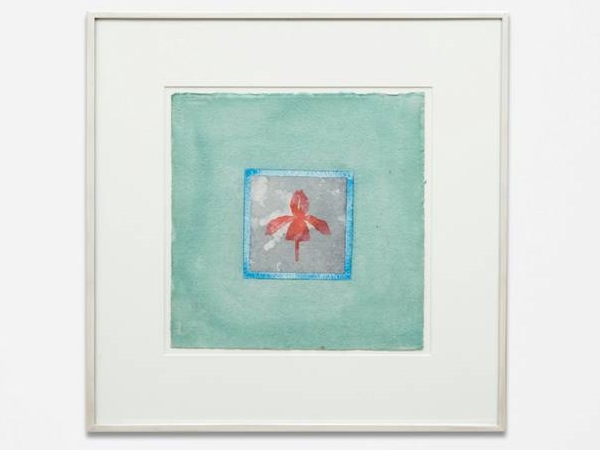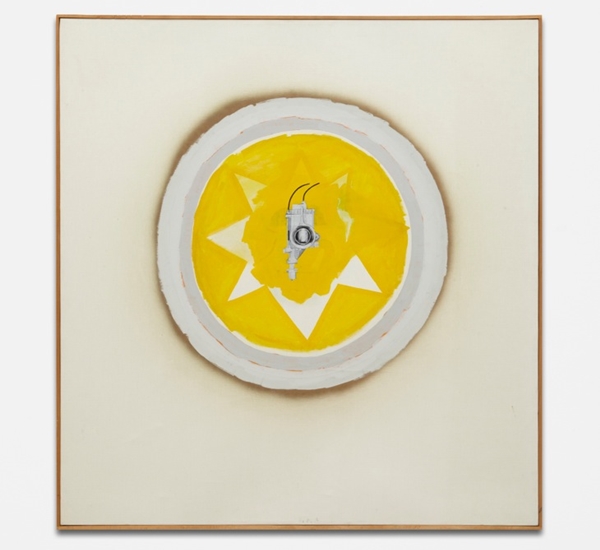Art & Exhibitions
Billy Al Bengston’s Proto-Pop Art Lights Up Franklin Parrasch Gallery
"Transcendental Bengston-tation" opens May 1 with paintings spanning a half-century.

"Transcendental Bengston-tation" opens May 1 with paintings spanning a half-century.

Benjamin Sutton

Billy Al Bengston has a very humble attitude when it comes to his paintings.
“When I was younger, I thought I was making something new, but the only thing I was doing was reinterpreting the materials and making a decorative object that didn’t have a specific meaning,” he said in an interview earlier this year. “Paintings are primarily decoration until you sit down and look at them, and most paintings, if you put them in the wrong light, don’t look how they were intended. If a painting needs a light fixture or if it needs a certain wall or something, then it is another thing entirely. So my thinking was to make something that does not need any specific kind of light.”
In spite of his best intentions, Bengston’s paintings read very differently depending on the lighting, and perhaps more so even than works by the generation of West Coast Pop artists he came up with. His dazzling polyurethane and lacquer on aluminum works and his more subtle, contemplative watercolor and acrylic paintings repurposing corporate logos and pop culture imagery respond very differently to different lighting situations. The conditions will be ideal for works from the full breadth of Bengston’s career at New York’s Franklin Parrasch Gallery, where an exhibition of his paintings spanning more than 50 years opens on May 1.

Billy Al Bengston, Maui Watercolor (1974).
Courtesy the artist and Franklin Parrasch Gallery.
The show, playfully titled “Transcendental Bengston-tation,” will include works from his best-known series. Particularly well-represented is his suite of “Dracula” paintings, so named because the Iris sugar company logo at the center of each piece resembles not only an iris but also Dracula flying through a window, Ken Price once told Bengston. They will range from the muted, off-white, 1972 painting Montpelier Dracula to the fiery, red-on-yellow Gold Hill Dracula from 1969. Also on hand will be an example of his compositions in automotive paint on aluminum panels, which hark back to his days as a semi-professional motorcycle racer. As if to subvert the tendency of such works to devolve into finish fetish Minimalist expanses of pure color, Bengston banged, crinkled, and otherwise dented the panels. Men Are Like That (1969), with its pockmarked, sand dune-like patterns of polyester resin and lacquer, is emblematic of that seminal series.
The new show also offers an opportunity to become more familiar with Bengston’s lesser known works. Chief among those are the 1982 watercolor and collage construction Kahuna, in which pieces of torn paper painted a shade of brilliant blue form a primitive head-like shape, and the very uncharacteristic landscape painting L.A.S. 10:35pm (1998), which shows a cloudy sky of cascading blues and grays over a similarly stormy ocean. For the Bengston completists, some exceptional recent works will also be on hand, including the superb painting Peahead Pinecone (2013)—a splash of bright yellow acrylic paint against a cool coral blue backdrop—and the 2009 acrylic-on-Tyvek work Robertula Diaz, with its wavy patterns of purple framed by a sharp square of turquoise.
Seeing such an incredible range of Bengston’s works in one place will prove, despite the artist’s claims, that these are more than mere decorative objects.
“Transcendental Bengston-tation” runs May 1 to June 28 at Franklin Parrasch Gallery.

Billy Al Bengston, Carburetor I (1961).
Courtesy the artist and Franklin Parrasch Gallery.